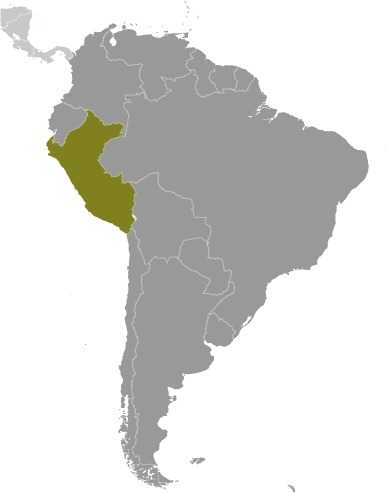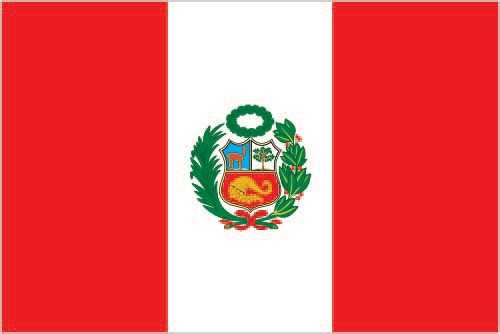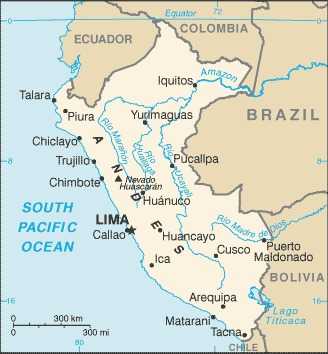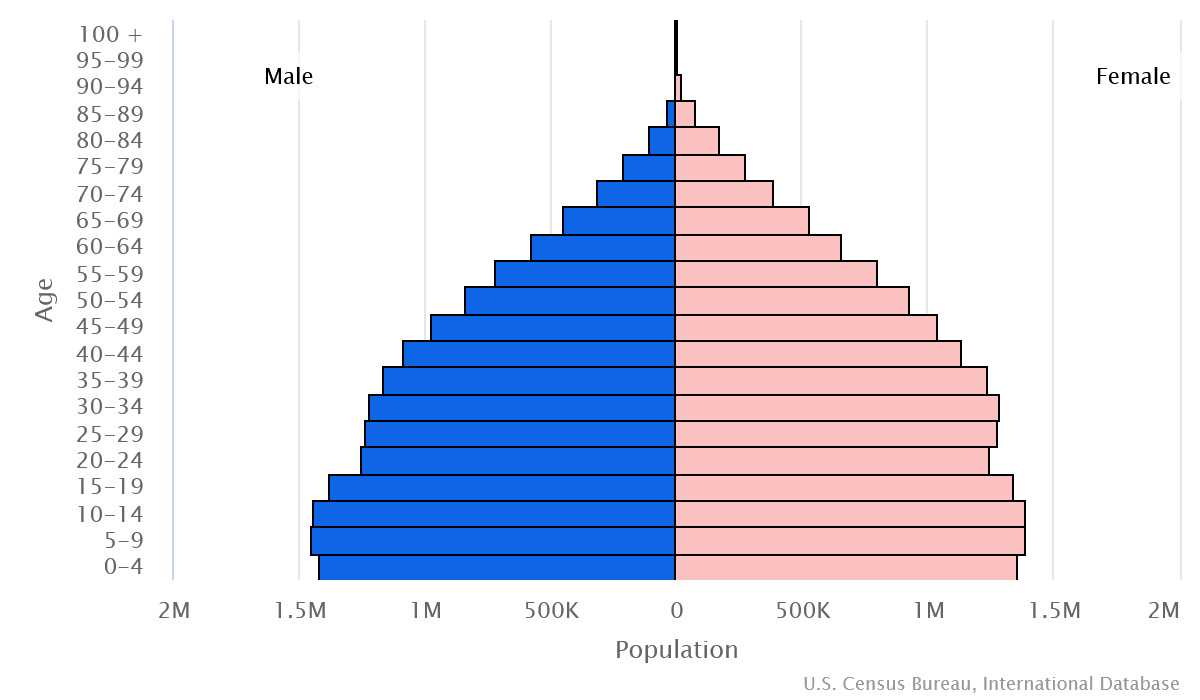Introduction
Background
Ancient Peru was the seat of several prominent Andean civilizations, most notably that of the Incas whose empire was captured by Spanish conquistadors in 1533. Peru declared its independence from Spain in 1821, and remaining Spanish forces were defeated in 1824. After a dozen years of military rule, Peru returned to democratic leadership in 1980.
Geography
Area
total: 1,285,216 sq km
land: 1,279,996 sq km
water: 5,220 sq km
Climate
varies from tropical in east to dry desert in west; temperate to frigid in Andes
Natural resources
copper, silver, gold, petroleum, timber, fish, iron ore, coal, phosphate, potash, hydropower, natural gas
People and Society
Population
total: 32,600,249
male: 15,952,556
female: 16,647,693 (2024 est.)
Ethnic groups
Mestizo (mixed Indigenous and White) 60.2%, Indigenous 25.8%, White 5.9%, African descent 3.6%, other (includes Chinese and Japanese descent) 1.2%, unspecified 3.3% (2017 est.)
Languages
Spanish (official) 82.9%, Quechua (official) 13.6%, Aymara (official) 1.6%, Ashaninka 0.3%, other native languages (includes a large number of minor Amazonian languages) 0.8%, other (includes foreign languages and sign language) 0.2%, none 0.1%, unspecified 0.7% (2017 est.)
Religions
Roman Catholic 66.4%, Protestant 22.4% (Evangelical 19.6%, other Protestant 1.3%), other 1.9%, agnostic/atheist none 6.8%, unspecified 1.2% (2023 est.)
Population growth rate
0.48% (2024 est.)
Government
Government type
presidential republic
Capital
name: Lima
Executive branch
chief of state: President Dina Ercilia BOLUARTE Zegarra (since 7 December 2022); first vice president (vacant); second vice president (vacant); note - the president is both chief of state and head of government
head of government: President Dina Ercilia BOLUARTE Zegarra (since 7 December 2022); first vice president (vacant); second vice president (vacant)
Legislative branch
description: unicameral Congress of the Republic of Peru or Congreso de la República del Perú (130 seats; members directly elected in multi-seat constituencies by closed party-list proportional representation vote to serve single 5-year terms)
Economy
Economic overview
upper middle-income South American economy; hit hard by political instability and COVID-19 but rebounding quickly; second-largest cocaine producer; current account balance improving; persistent income inequality; diversified exporter
Real GDP (purchasing power parity)
$433.926 billion (2022 est.)
$422.584 billion (2021 est.)
$372.592 billion (2020 est.)
Real GDP per capita
$12,700 (2022 est.)
$12,500 (2021 est.)
$11,200 (2020 est.)
Agricultural products
sugarcane, potatoes, rice, bananas, milk, chicken, maize, oil palm fruit, cassava, grapes (2022)
Industries
mining and refining of minerals; steel, metal fabrication; petroleum extraction and refining, natural gas and natural gas liquefaction; fishing and fish processing, cement, glass, textiles, clothing, food processing, beer, soft drinks, rubber, machinery, electrical machinery, chemicals, furniture
Exports
$71.197 billion (2022 est.)
$65.914 billion (2021 est.)
$45.544 billion (2020 est.)
Exports - partners
China 30%, US 15%, Japan 5%, Canada 5%, South Korea 4% (2022)
Exports - commodities
copper ore, gold, natural gas, refined copper, refined petroleum (2022)
Imports
$69.506 billion (2022 est.)
$58.708 billion (2021 est.)
$42.303 billion (2020 est.)
Imports - partners
China 27%, US 24%, Brazil 6%, Argentina 4%, Chile 3% (2022)
Imports - commodities
refined petroleum, crude petroleum, cars, broadcasting equipment, trucks (2022)
Exchange rates
nuevo sol (PEN) per US dollar -
Exchange rates:
3.835 (2022 est.)
3.881 (2021 est.)
3.495 (2020 est.)
3.337 (2019 est.)
3.287 (2018 est.)
Page last updated: Wednesday, May 15, 2024




